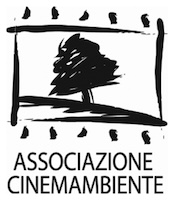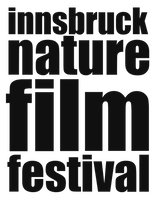Folco
Quilici
biography
«I started travelling as a child, following my parents in their work, my father writing and my mother painting; in the early 1950s, I then continued on my own, making a bit of a synthesis between the habit of words and the taste for images inherited from my parents».
A director, writer, photographer, scholar and great traveller, Folco Quilici has produced an impressive body of work in over forty years of professional and artistic activity: eight feature films - over three hundred short and medium-length films including two works presented out of competition at the Venice Film Festival Gauguin (1957) and L’angelo e la sirena (1980) -, dozens of television series, travel diaries, short stories, novels, essays, reportages and photographic books made him a point of reference in the field of documentaries and scientific fiction, and in the reflection on the relationship between reality and its representation.
His work moves from the observation of life, nature and history in both a synchronic and diachronic sense with the awareness that every story, and cinema in particular, «is transformation because at the very moment you choose a target you are making truth or lies and making truth means understanding historically what you are telling». This declaration of poetics gave rise to the great documentaries and ‘docu-dramas’ that made him known all over the world and that made him ‘modern’ if this word has any meaning, back in the 1950s.
Also a pioneer in technical experimentation, he made his debut in 1954 with a documentary destined to tour the world together with the book that followed: Sesto continente, perhaps the first full-length colour film about the underwater world. The exceptional footage traces the boundaries of a new continent available to man: the sea as a new frontier. Almost half a century has passed and this frontier has largely been crossed, and today's environmental consciousness forces the addition of the adverb ‘unfortunately’.
The subsequent film Ultimo Paradiso (1955) opens the so-called ‘Quadrilogy of the South Seas’, a series of films in which the popularising aspect and observation of nature are inserted (and mediated) in a more strictly narrative structure. Quilici enlists the help of great men of letters, Ennio Flaiano, Italo Calvino and Augusto Frassinetti, in his search for an «ideal life model, an ideal relationship between things and man», and a balance between great documentation and great storytelling.
Ultimo paradiso deals with the lives of some men in Polynesia, a place at once real and fantastic, whose reality is being overwhelmed by unstoppable transformations: beauty and harmony condemned to destruction. This is a theme that will be constant in subsequent films from Tiko and the Shark (1960), an ecological fable based on the novel of the same name by Clement Richter, adapted by Calvino, in which environment and pure sentiments are overwhelmed by the greed of ‘progress’ from which there is nothing left to do but flee, to Oceano (1970), in which the horror of the atomic experiments appears in the finale, up to Fratello mare in which beauty can only be shown through the memory of the old narrator.
These four films significantly helped Quilici to achieve the goal he had set himself at the beginning of his career: «to earn the spectacular documentary made with a narrative language a rightful place in scientific cinematography and the consideration and esteem of those who love and study cinema».
In 1971 he received an Oscar nomination for Toscana, one of the sixteen films in the series Italia dal cielo, to which Calvino, Sciascia, Silone, Praz, Piovene and Comisso also collaborated between 1964 and 1979.
Quilici also devoted himself to the production of cultural programmes for both Italian and foreign television from the reportage Tre volti del deserto (‘57) to the series Alla scoperta dell'Africa (’64-‘65), Malimba (’66), India (‘66-’67), Islam (‘68-’69), Alba dell'uomo (‘70-’75), Mediterraneo (‘71-’76), L'uomo europeo (‘76-’80), I mari dell'uomo (‘71-’74) and many other titles up to Arcipelaghi (‘93-’94) and Le Alpi (‘96-’98).
For the thirteen films in the Mediterraneo series and the eight in L'uomo europeo Quilici had one of the greatest historians of our time, Fernard Braudel, at his side. The anthropologist Levi Strauss and the palaeontologist Leroy-Gouran also lent their advice. The archaeologist Sabatino Moscati guided Quilici in his series on underwater archaeology (Mare museo ‘88-’92) and on the Phoenicians (Sulle rotte di porpora ‘87-’88).
Since 1992 he has worked for the Istituto Luce and the Poligrafico dello Stato as director of the monumental history in images L'Italia del XX secolo, 60 40-minute films based on texts by historians Renzo De Felice, Valerio Castronovo and Pietro Scoppola. He was also involved until 1999 in an international co-production of three films entitled Lungo le vie e le rotte dei marmi.
As a writer, after having won the Marzotto Prize in ‘55 for Sesto continente, the Malta Prize in '81 for Mediterraneo, the Fregene Prize in '85 for Cacciatori di navi and the Premio Estense in ’93 for Africa, he has written numerous non-fiction and narrative works for Italian and foreign publishers. He edited La grande enciclopedia del mare, the two volumes La mediterranee and in 1997 he published the novel Cielo verde and in June ‘98 Naufraghi. Quilici has collaborated with the Italian and international press (‘Life’, ‘Epoca’, ‘Panorama’, ‘Europeo’, ‘La Stampa’, ‘Il Corriere della Sera’).







